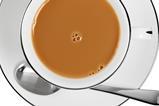Men’s selfcare has shifted dramatically in a relatively short space of time, and it continues to evolve as certain behaviours become accepted and embraced by men, and also society.
A quick splash of water, a spray of deodorant and a brush of the teeth. That was, arguably, the beauty regime of most men some decades ago. But it is now more complex, driven and influenced by many changing trends and factors, which is why razor makers, such as Procter & Gamble-owned Gillette, are increasingly looking below the belt to grow sales.
Male grooming grew in value by 3.3% to near £800m last year [Kantar 52 w/e 22 January 2023]. While this value uptick was driven by a 7.7% rise in average pack prices, it illustrates a lucrative and multifaceted sector.
Traditional products, such as razors, declined by £4.4m on the previous year and have struggled as men – in part driven by celebrity culture – have considerably reduced their daily wet shaving habits. This is also seen in shaving soap’s decline, which dropped in value from £83m to £57.5m over 12 years [Statista 2010-2022].
The rise of the hipster in the late 2010s – with their beards, vintage clothes and thick-rimmed glasses – along with rugged and unshaven musicians and popstars, helped to free man’s facial fuzz. It evolves even now as the moustache – last popular in the 1970s and 80s (and 90s briefly, thanks to Tom Selleck’s appearance in Friends) – is again a thing.
It’s nose-neighbours for all as the ‘Hackney uniform’ has escaped Movember and now takes up year-round residence on the upper lips of 20 and 30-somethings blessed with the ability to cultivate one.
A trio of products aimed at male pubic hair trimming
Men, to the hindrance of razor makers, continue to shun the wet shave in favour of stubble. And their nether regions, by all accounts, are receiving a similar treatment – and sometimes, or quite often it would appear, a little less than stubble.
The number of men trimming their pubic hair rose from 40% in 2016 to 57% in 2018 [Statista 2016-2018], with Gillette claiming over 45% prefer a close shave and 47% a trim.
Enter Gillette’s recently-launched Intimate range, which as it suggests is directed towards men seeking to trim or remove hair down there – also known as manscaping. For what the razor – and disposable razor – market might have lost in face shaving, there is potential to gain by focusing on a new space.
Gillette’s duo of waterproof trimmers utilise Braun tech and, along with a manual razor, are designed to be gentle on “thin, loose skin”. The teeth on one of the devices are 33% closer than a beard trimmer to “reduce skin bulging” and features a protective comb.
There are also new creams and cleansers and, of course, the manual razor requires replacement razor heads.
After some tinkering and testing to ensure it can be safely used as intended, Gillette has essentially relaunched what already existed – razors and shavers. But these products are tapping into a different type of growth.
Intimate trimming among men is a growing business
Research by the manufacturer showed a third of men already grooming down there are using their face razor. It’s the same for 42% of fellas with electric trimmers, while near a third admitted to using a partner’s shaver or trimmer for their pubic hair. Almost two-thirds of those asked by Gillette admitted to nicking or cutting themselves while trimming intimate areas.
So, Gillette is interested in men’s pubic hair because it is a growing market with an identified demand it can answer, but with adaptations made to technology it already leads and specialises in.
Though it’s not only pubic hair trimming where male grooming brands can grow. British men are increasingly buying makeup. Over a third (39%) say they purchase and use cosmetics.
This rises to 42% of gen Z men, with 47% of 26 to 40-year-olds buying at least once a month and 63% at least occasionally.
A new wave of men ready to spend more time and money – and show it – on grooming is upon us.

























No comments yet